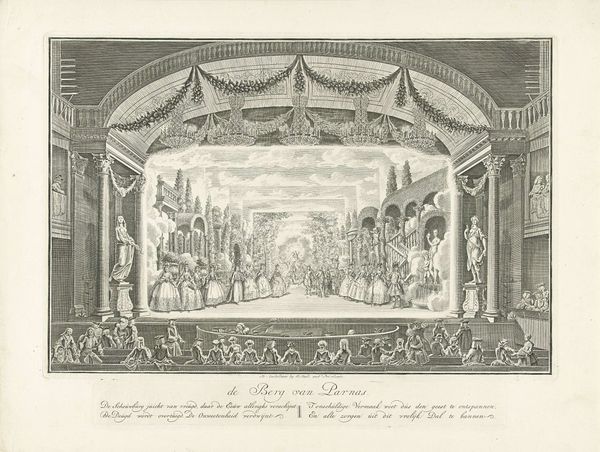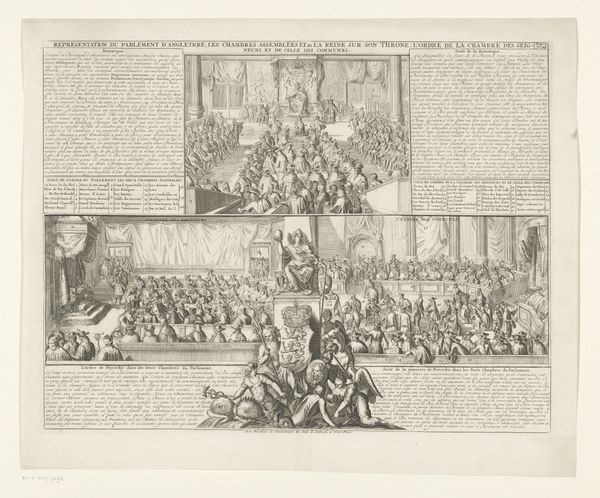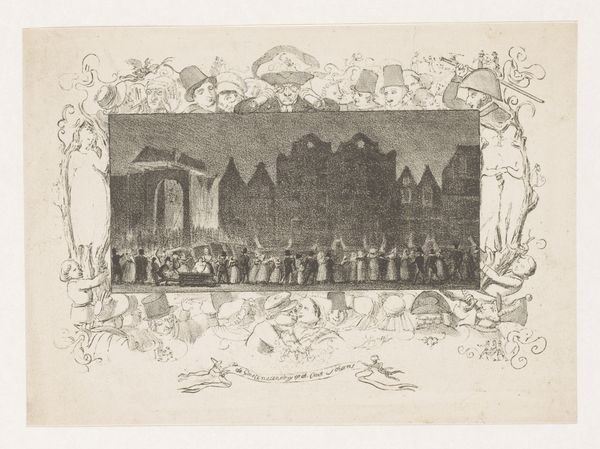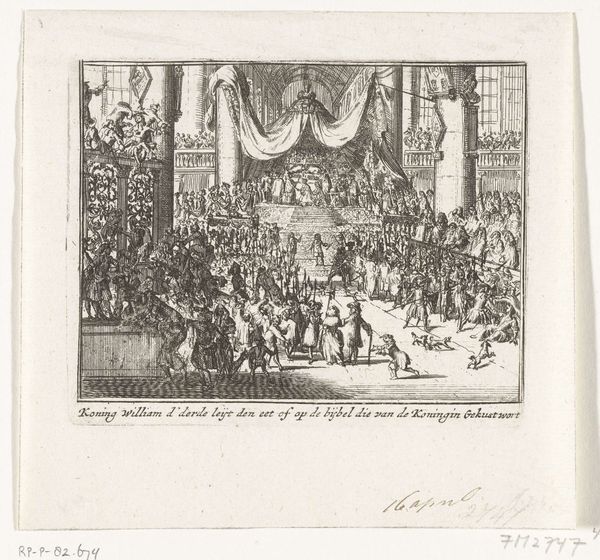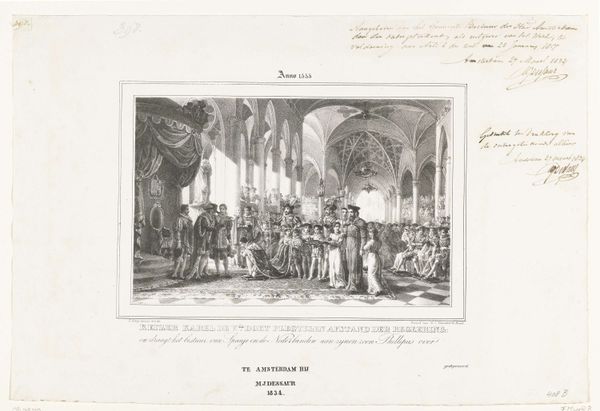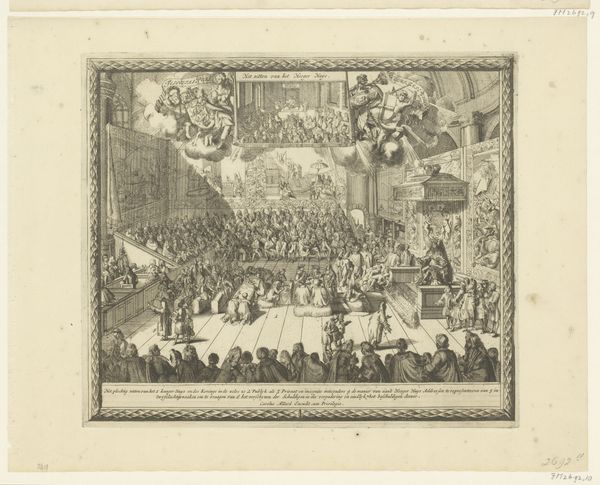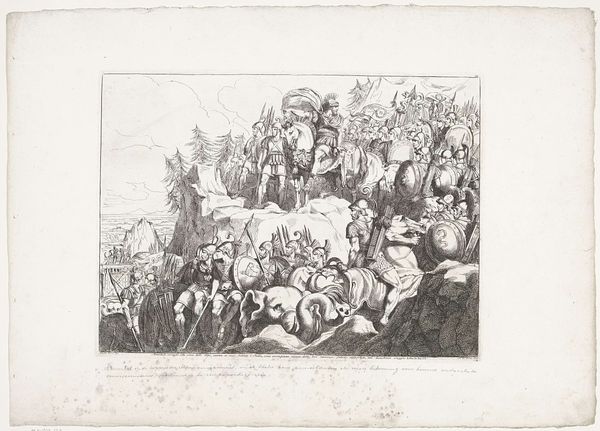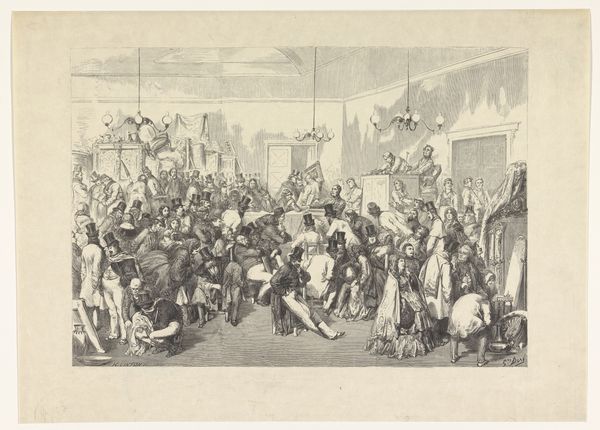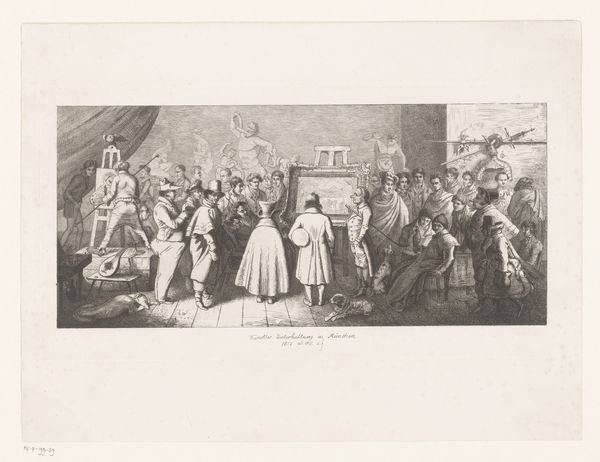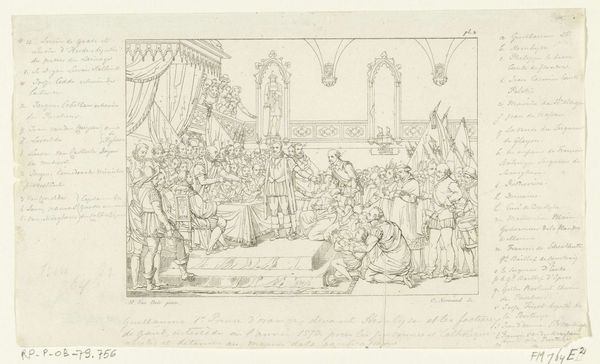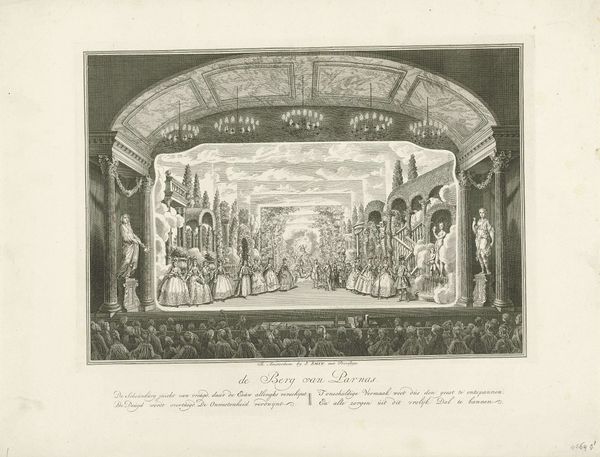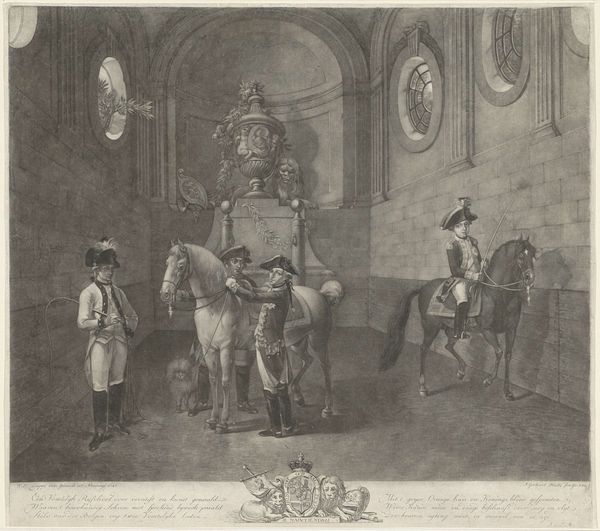
drawing, print, paper, ink, engraving
#
drawing
#
ink paper printed
# print
#
paper
#
ink
#
romanticism
#
genre-painting
#
history-painting
#
engraving
Dimensions: height 261 mm, width 346 mm
Copyright: Rijks Museum: Open Domain
Editor: This is "Ringtoernooi in de Manège van Dordrecht, 1846," a print made with ink on paper by Carel Christiaan Antony Last. It's so detailed, capturing a lively historical scene. I'm curious about how events like these reflect the broader social structures of the time. What do you see in this piece beyond just the pageantry? Curator: It's not simply pageantry, but a highly staged performance deeply entrenched in social and political hierarchies. Note the central figures on horseback; who do they represent? Consider the audience; their attire and placement signify power dynamics. The ring tournament revives chivalric ideals, but for whom are these ideals accessible? Editor: It seems very exclusive, doesn't it? Everyone present appears to be part of a specific elite class. So, the revival of chivalry wasn't for everyone; it reinforced existing social divisions? Curator: Precisely. It's crucial to examine whose history gets celebrated and perpetuated through art. This tournament wasn’t merely entertainment; it was a symbolic enactment of power, legitimizing a particular social order while marginalizing others. Editor: It's like this event visually reasserted their dominance, with everyone literally looking up to them. I hadn't thought of it that way at first. Curator: Think about the resources and labor required to stage such an event. Whose labor? Who benefits, and who is excluded? Examining the historical context through an intersectional lens unveils the complexities within seemingly celebratory depictions. Editor: I see now. This piece isn't just a historical record; it’s a statement about class and power dynamics. It really pushes you to think critically about representation. Curator: Exactly, and art becomes a powerful tool for questioning, challenging, and rewriting the narratives we inherit. Looking closer, the construction of gender must also be questioned within such settings. The question is: how complicit is art to the representation of reality?
Comments
No comments
Be the first to comment and join the conversation on the ultimate creative platform.
